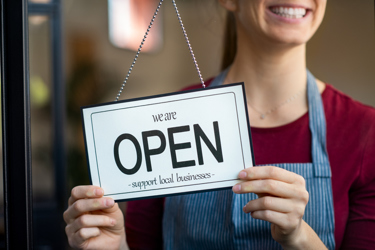Retaining Your Customers During COVID-19: Reimagine Personalized Experiences
By Brandon Logsdon, President and General Manager of Marketing Cloud and Fuel Pricing Solutions, PDI

In today’s competitive marketplace, delivering exceptional yet personalized customer experiences is no longer an option—it’s an expectation. However, how do you know if you’re meeting or exceeding customer expectations?
Currently, c-stores compete with a multitude of players focused on “grab and go offerings,” including drug stores and large to small-format grocery store concepts. Coupled with the digital transformation currently in play, customers’ need for frictionless retail has increased, driving convenience retailers’ approach to technology adoption. For many leaders, defining success in this area begins by asking, “What does success look like?”
Retailers can advance their efforts by reimagining innovative approaches to assess, gauge, and raise personalization for their customers. While opportunities for improvement abound, there are a few key areas in which c-stores can improve, including effective partnering, boosting targeted advertising, doubling down on loyalty, and making better use of data to improve real-time customer recommendations. Let’s take a look at these areas in more detail.
Effective Supplier Engagement
Partnerships are beneficial in any capacity, especially when convenience stores and their suppliers work together to drive a continuous stream of new and repeat customers. Maintaining a loyal customer base requires strategies that are customer-centric and embrace collaboration with suppliers. Through effective promotional strategies, CPG (consumer packaged goods) brands can drive foot traffic to convenience stores that ultimately convert into a purchase. On average, customers visit a c-store out of impulse with their goal ranging from filling up their vehicle to swiftly picking up an everyday item. Since the onset of COVID, this has changed. Pre-COVID, a consumer would rarely venture outside of their usual buying habits when visiting a c-store.
Now, consumer buying behaviors have drastically changed, with c-stores simultaneously experiencing an increase in basket size due to the pandemic and a reduction in consumer visits. For c-stores, the right offers and incentives become critical because while the uptick in increased basket size is present, c-stores have less of an opportunity to “get it right” when presenting shoppers with rewards they will redeem. In today’s climate, customers are more incentivized to enter the c-store on purpose, not happenstance.
When thinking of partnerships and collaborations beyond the sale, the method of sharing data and key insights between parties (c-stores and CPG brands) corrects and prevents problems on the shelf and can help retain customers and increase sales lift as a result of more effective promotions.
Targeted Advertising
As technology evolves at a faster pace, there’s something to be said about interacting with your customers face-to-face (with social distancing in play, of course) in real-time. However, as digital demand grows, convenience stores have a significant opportunity to reach potential and existing customers through digital marketing. Digital marketing initiatives open doors for merchants to engage with their customers. Ironically, it becomes less about understanding your customer initially and more about reaching them using highly-targeted tactics such as online display ads, mobile push notifications, and even SMS text. The average person is inundated with up to 10,000 advertising messages, 121 emails, and 128 texts per day, making personalization and contextual relevance imperative to successfully engaging your target audience in the c-store arena.
Meeting your customer exactly where they are will get you closer to the mark every single time.
Loyalty Remains King
Loyalty programs are one of the most effective tools for engaging consumers, and most business decision makers agree. In a recent study, 95 percent of respondents who work for c-stores, grocery stores, national brands, or CPG brands said their company had a loyalty program, confirming most businesses recognize the value of loyalty to accomplish their goals.
In a standard year, that “goal” typically ties to a desire to change consumer behavior profitably, making this critical in 2020. This year, 40 percent of all loyalty programs had the primary goal of changing customer shopping behavior, with 19 percent wanting to increase the frequency of store visits, 17 percent wanting to increase spending and basket size, and a 4 percent increase in cross-product or cross-brand shopping.
What is important to note is that customer loyalty is critical and retention plays a significant role in today's economy. As competition increases, c-store leaders must focus on customer retention, loyalty rewards, and brand relevance. Ideally, a targeted customer-centric business model will remain a strategic investment companies can't afford to overlook.
Focus On Customers’ Real-Time Needs With Data
The expectations of today’s customers have risen significantly. If their needs aren’t being filled right now, it’s too late. For c-store leaders, this means that their interactions must not only occur in real-time but must also be personalized. C-stores who successfully adopt customer analytics into their store operations and marketing strategy will become skilled at providing personalization at scale. How is this achieved? One way is through continuous fine-tuning of the marketing mix, where every customer persona is considered in real-time.
Lastly, there is something to be said for the traditional approach to superior customer service and interaction. Store associates will always prove to be the best advocates for getting the most out of your loyalty program. With every POS (point of service) interaction, there's a chance for associates to remind and encourage loyalty participation.
With the economy inching toward fiscal rebound, spending is still discretionary to a large extent, creating competitive challenges for the supply chain and retailers alike. Reimagining the customer experience requires using traditional methods with modern-day tools to stay competitive and build loyalty that lasts.
